The existence of intellectual property allows the granting of rights for its use by its owner to another natural or legal person through licensing. The realisation of revenue for the owner can also be done through its sale - through assignment or transfer of intellectual property.
Copyright
Relations relating to the creation and dissemination of works of literature, art and science are governed by Copyright and Related Rights Act.
Copyright in works of literature, art and science arises for the author with the creation of the work.
Object of copyright is any work of literature, art and science which is the result of creative activity and is expressed in any way and in any objective form, such as:
1. Literary works, including works of scientific and technical literature, works of journalism and computer programs
2. Musical works
3. Stage works - dramatic, musical-dramatic, pantomimic, choreographic, etc.
4. Films and other audio-visual works
5. Works of fine art, including works of applied art, design and folk arts and crafts
6. Realized works of architecture and applied spatial plans
7. Photographic works and works created in a manner analogous to photographic
8. Approved architectural projects, approved spatial planning projects, maps, schemes, plans, etc., relating to architecture, spatial planning, geography, topography, museology and any field of science and technology
9. Graphic design of the printed edition
10. Cadastral maps and state topographic maps
The following are also subject to copyright:
1. Translations and adaptations of existing works and folklore works
2. Arrangements of music and folklore works
3. Periodicals, encyclopaedias, collections, anthologies, bibliographies, databases and the like, which include two or more works or materials
The author is the natural person as a result of whose creative activity the work is created.
Copyright is protected as long as the author is alive and for 70 years after his death. In the case of works created by two or more authors, the term begins after the death of the last surviving joint author. In the case of musical works with lyrics and musical-dramatic works, the term expires 70 years after the death of the later of the author of the music and the author of the lyrics, whether or not those persons are named as joint authors, provided that the lyrics and the music were composed with a view to their being used together. The copyright in a film or other audiovisual work shall continue for 70 years after the death of the last survivor among the director, the writer, the cinematographer, the author of the dialogue and the author of the music, if it was composed specifically for the film. For works published in volumes, parts, issues or episodes, the period of 70 years shall be calculated for each of them separately.
The time-limits shall run from 1 January of the year following the year in which the death of the author occurs or the work is created, respectively communicated or published.
The author shall have the exclusive right to use the work he has created and to authorise its use by others. Acts such as:
1. The reproduction of the work
2. Distribution to an unlimited number of persons of the original or copies of the work
3. The public presentation or performance of the work
4. Broadcasting the work wirelessly
5. The transmission and retransmission of the work by cable
6. The public display of a work of fine art and a work created in a photographic or similar manner
7. The translation of the work into another language
8. The processing and synchronization of the work. Reworking is also the adaptation and introduction of any kind of changes to the work, as well as the use of the work to create a new work derived from it
9. The realization of an architectural project through the construction or elaboration of the object for which it is intended
10. Offering wireless or wired access to an unlimited number of persons to the work or to a portion thereof in a manner that permits such access to be made from a place and at a time individually selected by each of them
11. Import and export to third countries of copies of the work in commercial quantity
The author is entitled to remuneration for each use of the work and for each successive use of the same kind.
Copyright protection is carried out by the Ministry of Culture or by collecting societies.
Industrial property
The holder of industrial property may negotiate a license agreement with another entity (the licensee) granting it permission to use its intellectual property. In return, the licensor is entitled to receive payment for its permission, usually in the form of a royalty, which is set as a percentage of sales or otherwise.
Patent Office of the Republic of Bulgaria is the national state authority for the legal protection of industrial property objects.
The main types of industrial property are:
1. Patents for inventions
2. Useful models
3. Trademarks
4. Industrial Designs
5. Geographical designations
6. New plant varieties and animal breeds
7. Topology of integrated circuits

